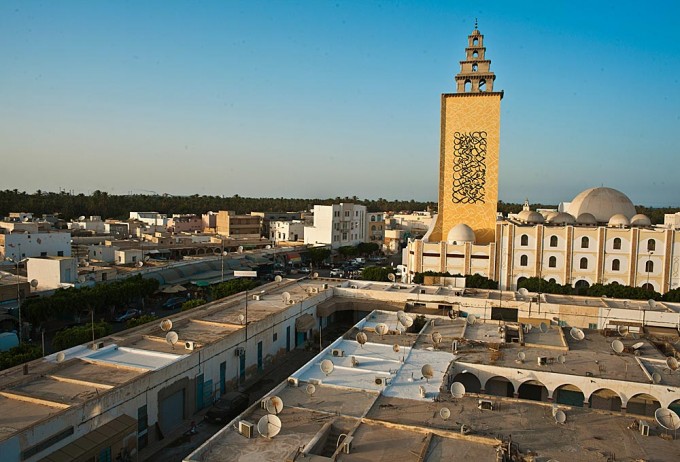
23 February 2013
Jara Mosque Project
In one of his most ambitious projects to date, French-born Tunisian artist eL Seed embarked on a project to paint Tunisia’s largest graffiti mural on the country’s tallest minaret, located at the Jara Mosque in the south-eastern industrial city of Gabès. Commissioned and supported by the Barjeel Art Foundation, eL-Seed’s project was completed whilst gaining international media coverage and interest.
Reacting to last year’s clashes between religious sects and the art community in Tunisia, the artist embarked on a project to transform this religious landmark into a public artwork during the holy month of Ramadan. Specialising in ‘Calligraffiti’—an art form that combines graffiti with Arabic calligraphy—eL Seed’s large-scale production cites traditional principles of Arabic script with the modern sensibilities of graffiti counter-culture.
Tensions in Tunisia have sparked a critical debate about the limits of artistic freedoms in the birthplace of the Arab Spring as it undergoes a nascent transition to democracy. “This project is not about decorating a mosque, it is about making art a visible actor in the process of cultural and political change,” comments el Seed, who started work on the mural on July 20. “I truly believe that art can bring about fruitful debate, especially within the uncertain political climate right now in Tunisia.”
Initiated by Al Khaldounia, the project was approved by the Governor of Gabès and the mosque’s Imam, Slah Thebet. The 57-meter-high mural currently covers the entire concrete tower face of Jara Mosque in hopes of highlighting the convergence of art and religion and raising the public’s awareness by infusing art directly into the urban landscape. Exhibiting the words, “Oh humankind, we have created you from a male and a female and made people and tribes so you may know each other,” eL Seed quotes a verse of from the Holy Qur’an, which addresses the importance of mutual respect and tolerance through knowledge as an obligation.
“I hope that this artistic wall on the minaret will help to revive the city, and especially tourism in Gabes,” comments Thebet.